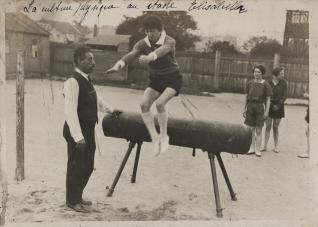As time went on, the negative changed, materials went from paper to glass, then to flexible film. Emulsions were perfected, enabling shots to be taken faster, cameras easier to use and as such, photography became more « democratic ». A room half way through the visit provides a summary of these changes and underlines the importance of the emergence of the gelatine-bromide silver emulsion in the 1880s. This emulsion was extremely light-sensitive and enabled shots to be taken in a fraction of a second. These instants captured a step being taken, a bird taking off, a sportsman jumping. Now that long posing times were no longer necessary, portraits were less frozen and shots began to look more spontaneous. The museum exhibits a number of images illustrating the procedure as well as the different types of negatives that were on the market at the end of the 19th century. The first hand-held cameras are also on show, like the
Kodak Pocket, which was so easy to use that it was largely responsible for the boom on amateur photography.






